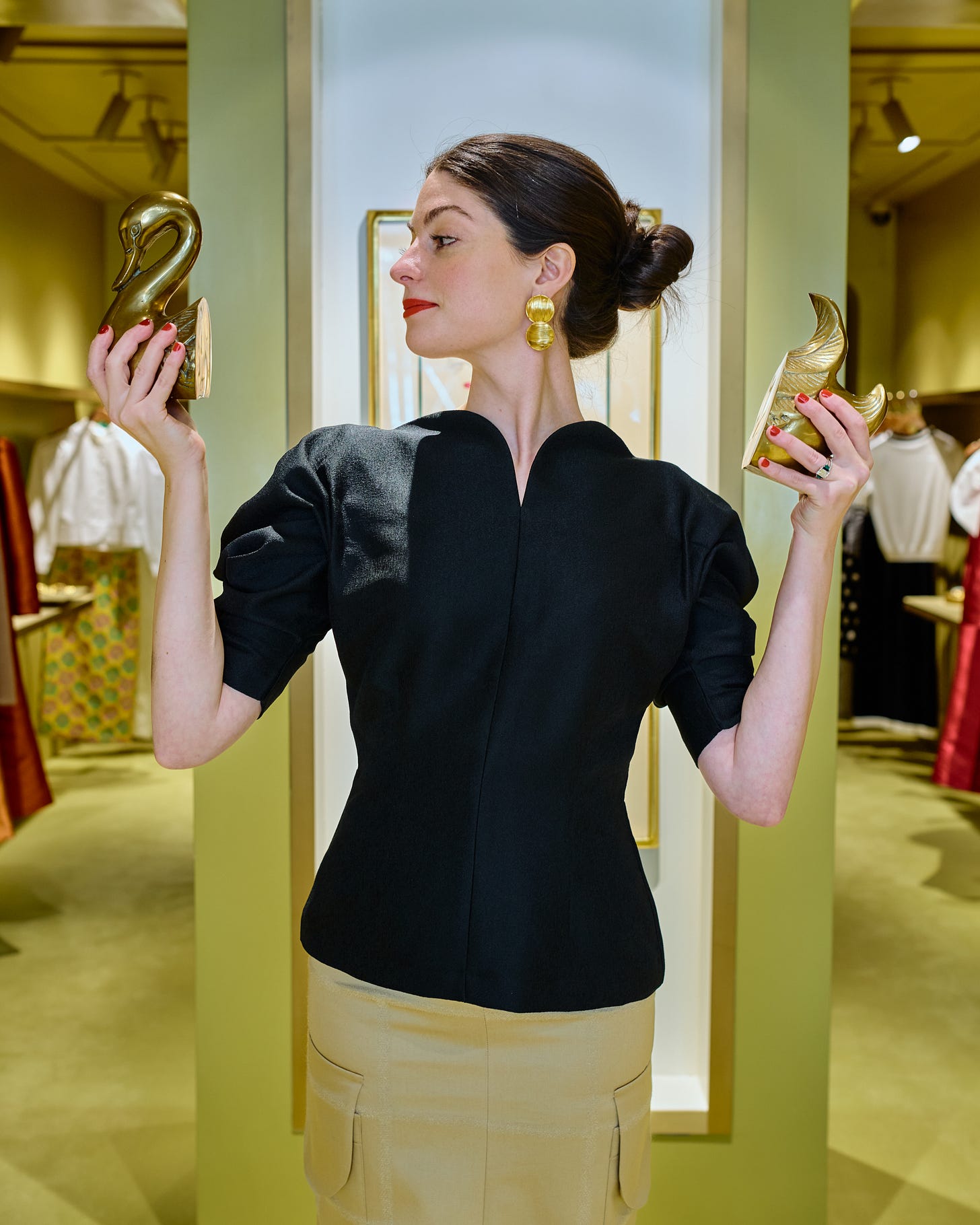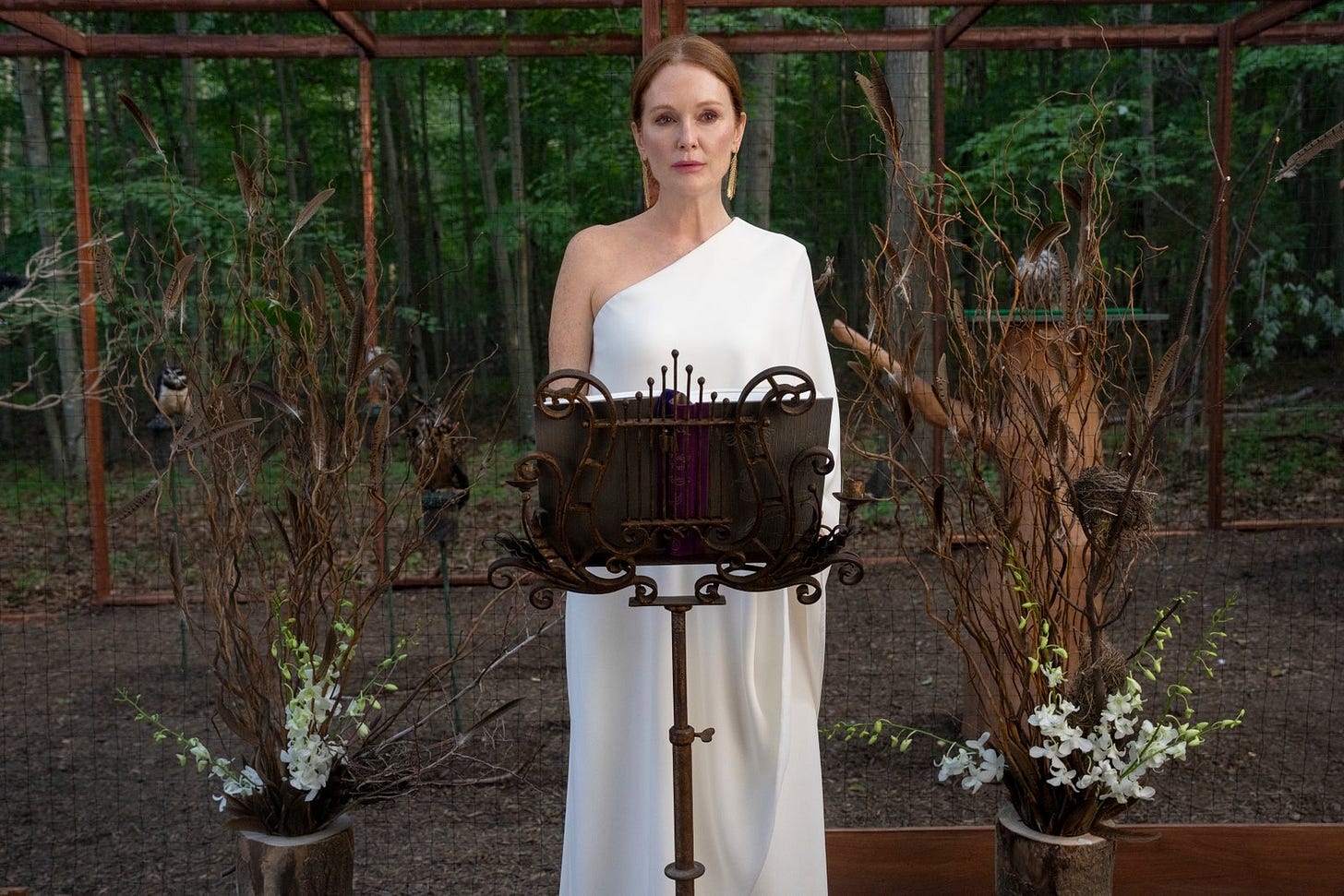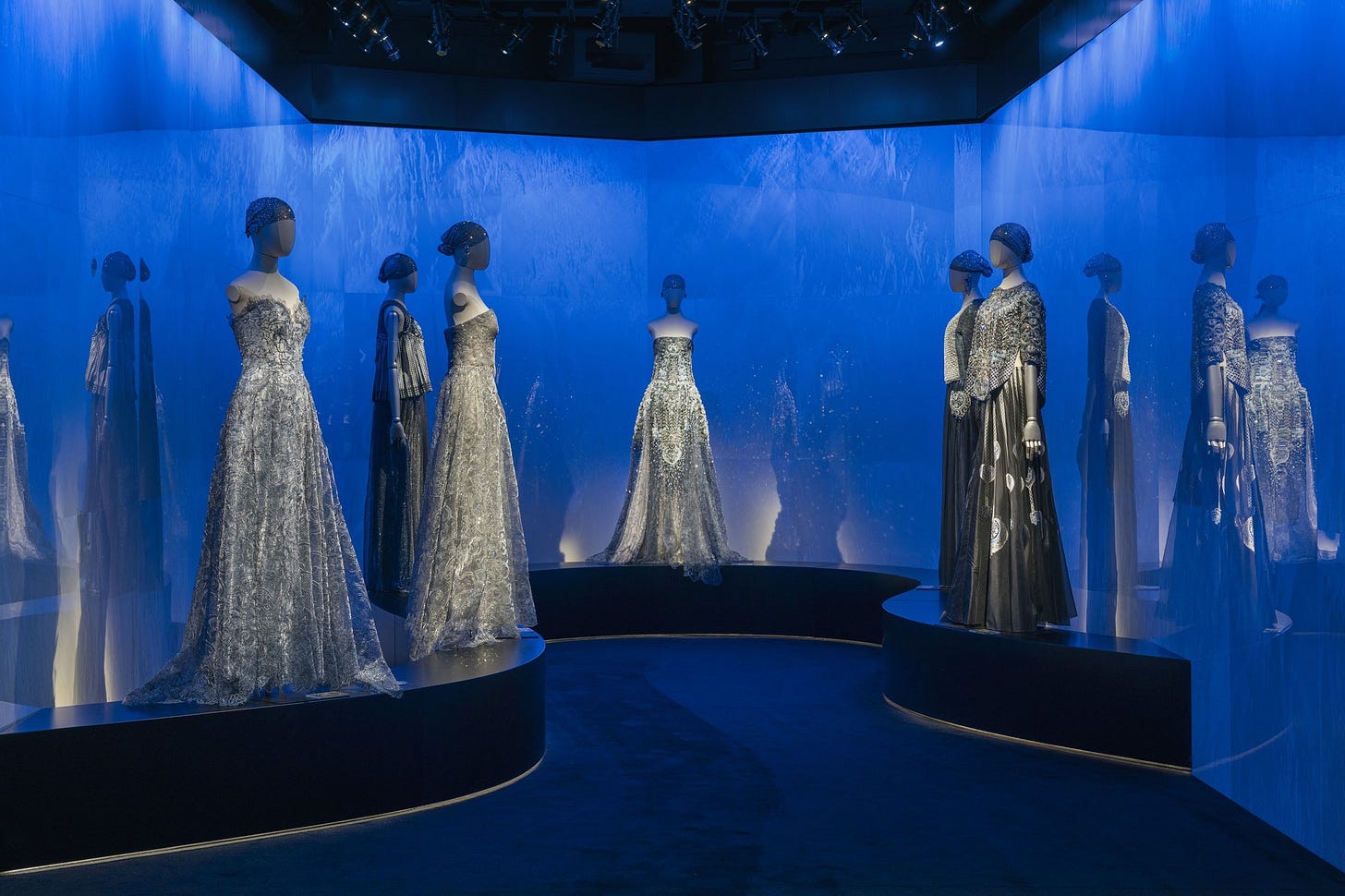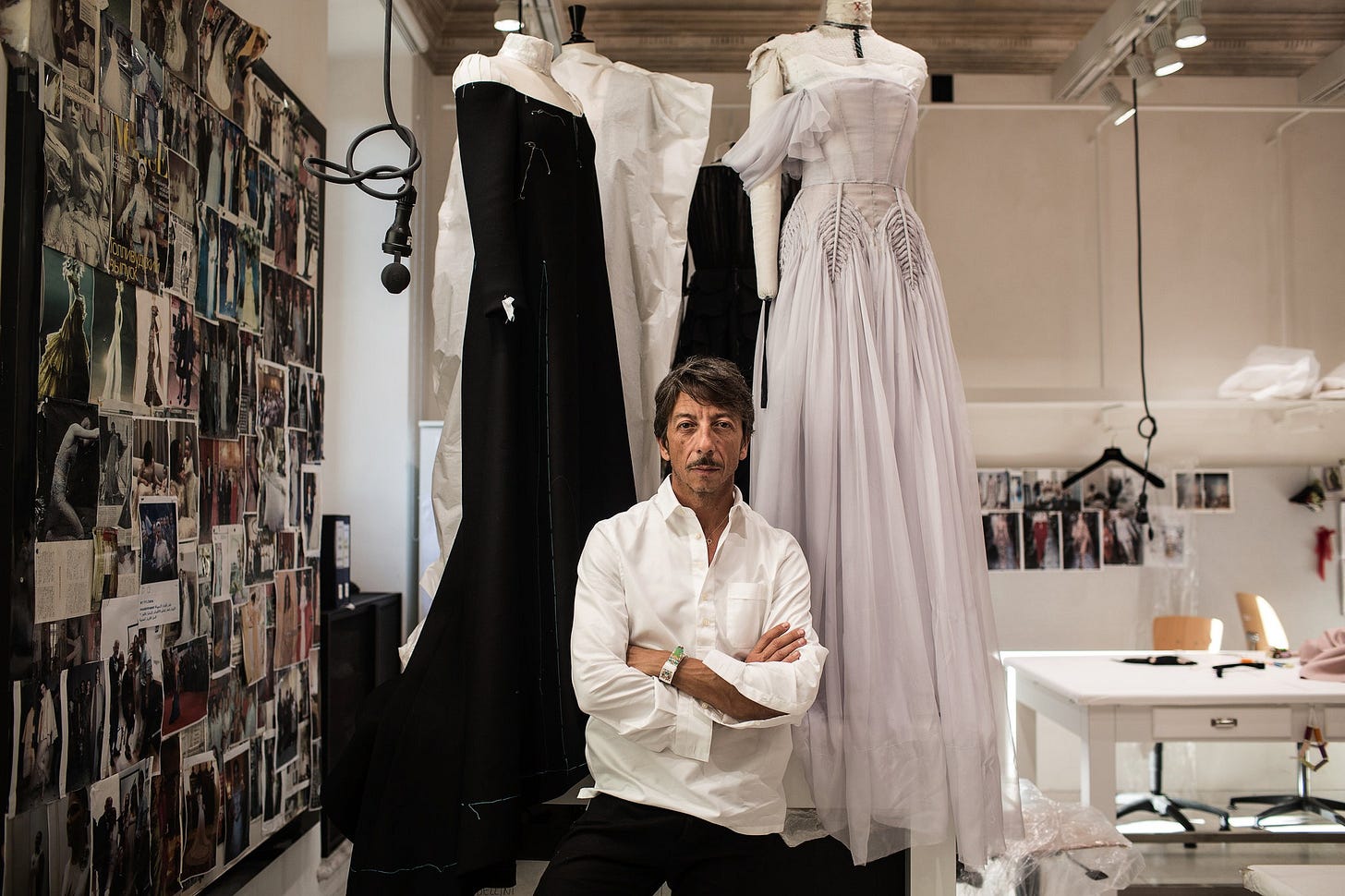What to Collect From the Balenciaga Archive, Per Lilah
Plus, more vintage shopping and culture recommendations for the week.
This week’s recommendations: With Pierpaolo Piccioli newly named creative director at Balenciaga, I’m looking back at the house’s most collectible vintage—from the whisper-weight tulle of Ghesquière’s early days to the floral bombast of Spring 2008. In culture: Sirens is your next binge-worthy watch (imagine The White Lotus went to prep school), Giorgio Armani’s couture retrospective in Milan is a shimmering masterclass in elegance, and this week’s totally legit, non-AI-generated book rec? It comes courtesy of Hailey Bieber, who’s reading The Portable Nietzsche. Existentialism, but make it chic.
Balenciaga Look-Backs
With the news that Pierpaolo Piccioli has been named creative director at Balenciaga, my thoughts have turned—naturally—to the past. Not just to the maison’s roots under the great Cristóbal Balenciaga (whose genius is, in many ways, incomparable), but to the intervening decades that have shaped and reshaped the house’s DNA.
Each brought their own interpretation of Cristóbal’s legacy, but for me, Nicolas Ghesquière remains the house’s most thrilling inheritor. While Demna found global resonance by pushing the envelope of fashion (and arguably, taste), I’ve always felt his conceptual maximalism was better suited to Vetements, where subversion was the point. Ghesquière, by contrast, found a way to honor the architectural romance of the house while spinning it into something radically modern—his tenure felt like fashion alchemy.
Of course, Cristóbal himself remains fashion’s north star, but his original creations are more often found behind vitrines in museums than on vintage resellers' racks. Which is why I suggest you look to Nicolas-era pieces instead. They’re historic—but still wearable. Reverent—but undeniably cool.
As for what lies ahead? If anyone can bring back the magic, it’s Pierpaolo. Here’s hoping the next chapter at Balenciaga is one worth collecting, too.

This was the very first collection Nicolas Ghesquière designed for Balenciaga, and already, the magic was there. The deceptively simple silhouette of Look 17 is elevated by a gossamer-thin chiffon overlay on the bodice—an ethereal detail the still photos never quite capture. But of course I’ve pulled the original runway footage, where you can see the dress in motion: weightless, whispering, and unforgettable.
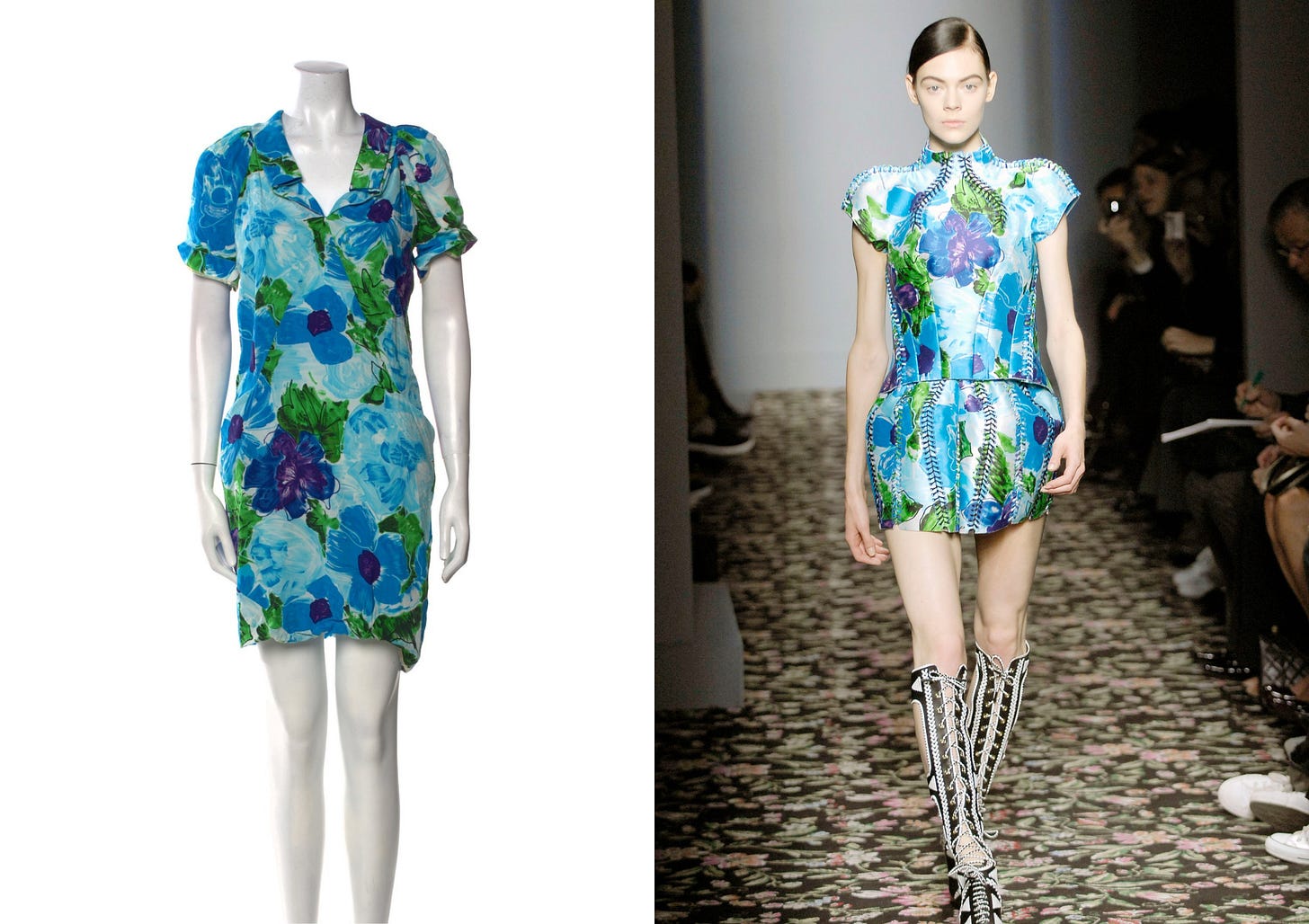

Before fashion went viral, there was Spring 2008—a collection that practically broke the internet before the internet behaved that way. With Jennifer Connelly as the face of the brand, Nicolas Ghesquière delivered a flower bomb of a show that felt both futuristic and botanical. “I’ve done prints before, but I never went to the flowers,” he told Vogue before the runway. “So this was Balenciaga in full bloom: a splashy riot of hypergorgeous hydrangeas, pansies, peonies, daffodils, and anemones.”
While the sculptural runway pieces came with car-body silhouettes and foam-backed folds, the two items I pulled—a wrap dress and a high-waisted mini—feature the same graphic florals but in silhouettes that feel refreshingly wearable. Revolutionary, yes—but also realistic. Ghesquière, after all, was always able to have his cake, sell it, and send the fashion masses scrambling for crumbs.

This particular dress (Balenciaga Pre-Fall 2009, Look 23 ) reflects the quieter power of Ghesquière’s Balenciaga. As Vogue wrote at the time, “Evening options ranged from a portrait gown with a grand flaring skirt that called to mind Richard Avedon’s 1950s Vogue sittings to a super-modern red-carpet number in navy and black that twisted around the body.” The one I selected falls into the latter camp—a sculptural, prim silhouette in gorgeous duchess satin and black lace. It’s Ghesquière at his most refined, and a clear signpost toward the direction he would take in seasons to come.
More Vintage Things—No Context Needed


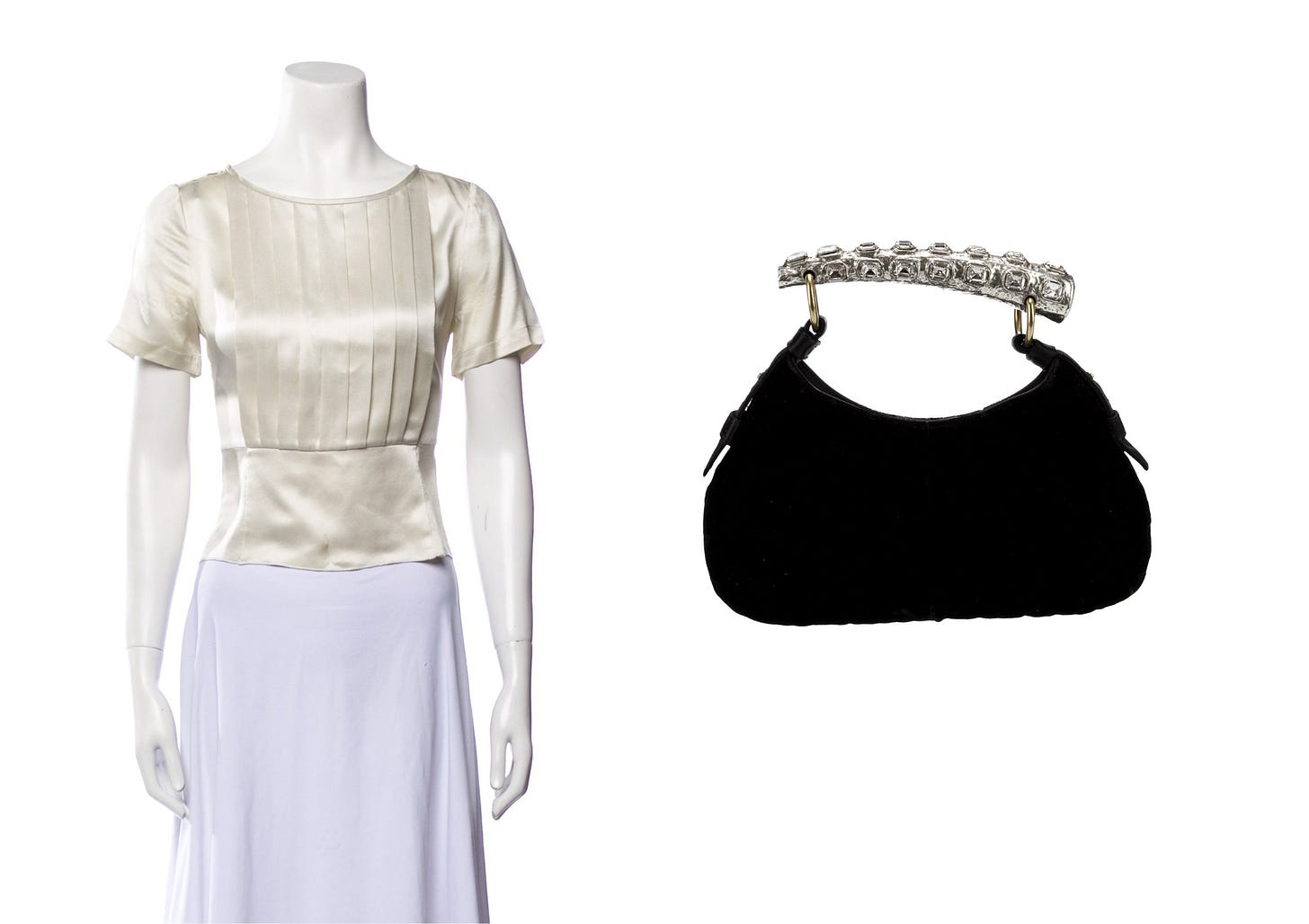


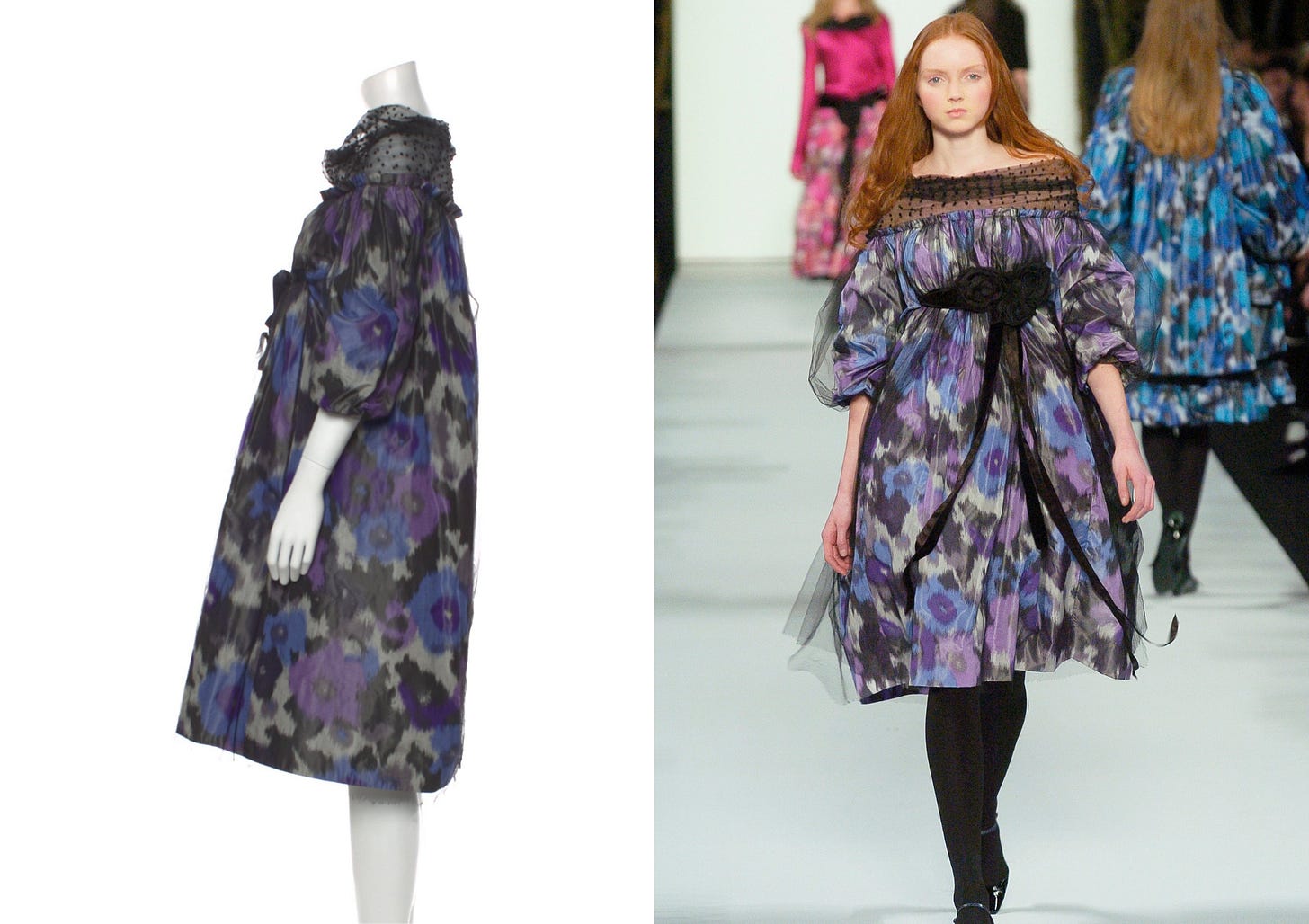
A Moody Marc Jacobs
This one is pure romance: a silk watercolor floral dress from Marc Jacobs Spring 2005, Look 39, finished with a sheer dotted Swiss neckline that adds just the right touch of sweetness. It's the kind of piece that feels like it drifted out of a daydream.
And in fact, it did—featured memorably on Natalia Vodianova in the “That’s Amore” editorial by Mario Testino for Vogue’s July 2005 issue. There, she wandered Venice’s canals and cobblestoned alleys in a haze of glamour, and this dress floated along with her. Light, lovely, and undeniably nostalgic, it's a piece that captures a very specific moment in early-aughts fashion: sentimental, yes, but never saccharine.

Pretty in Lang
Leave it to Helmut Lang to make pink feel like a minimalist’s power move. The dress I pulled—cut in a powdery blush silk with an off-the-shoulder neckline and exposed side zip—echoes Look 95 from his Fall 2000 collection, originally worn by Amber Valletta. It’s spare, refined, and somehow still seductive.
As Vogue noted at the time: “Lang took time out to create sharp, clean and timeless clothes… The ease of the silhouette, and the signature color palette—shades of basic tones with occasional shocks of color—were all his own.” That’s what makes this piece so compelling. While the rest of fashion indulged in ornamentation, Lang leaned into restraint—and the result still feels radical. Pink, redefined.
You Really Should Watch This: Sirens
What if The White Lotus wore Lilly Pulitzer? Netflix’s Sirens drops us into Port Haven, a preppy summer enclave where class warfare is waged in madras prints and monogrammed blazers.
Meghann Fahy plays Devon, a Buffalo outsider in black eyeliner who instantly clocks the Stepford-like crowd: “Why does everyone look like an Easter egg?” It’s a line—and a lens—for the entire show.
Costume designer Caroline Duncan (of The Stepford Wives) leans in hard, outfitting Milly Alcock’s Simone in Goop x Lilly and basing looks off The Official Preppy Handbook. Meanwhile, Julianne Moore floats in stealth-wealth Chloé, and Kevin Bacon channels JFK Jr. in Brunello.
It’s satire. It’s style. And it’s extremely watchable.
You Really Should See This: Giorgio Armani Privé 2005–2025
A dream in greige, sequins, and sheer discipline, Giorgio Armani Privé 2005–2025 at Armani/Silos in Milan is a shimmering retrospective of two decades of haute couture.
The exhibition is anything but chronological. Instead, Mr. Armani has arranged nearly 150 looks by mood—placing, say, a silver Oscar gown worn by Cate Blanchett beside a crescent-shouldered silk piece from 2008, or letting an Irina Shayk-worn creation from this year’s Cannes Festival anchor the entire atrium. The effect is atmospheric, reverent, and utterly timeless.
“In haute couture,” Armani says, “I am free to express my vision of style without limits.” And you feel that freedom in every Swarovski shimmer, in every sculpted jacket and celestial motif. The exhibition runs through December 28, 2025—if you find yourself in Milan this year, don’t miss it. It’s not just a fashion show. It’s a constellation.
You Really Should Read This: The Portable Nietzsche
Much ado has been made this week about summer reads. (You know the article: AI-generated nonsense with fake titles like The Italian Tablecloth Murders and Where the Lobster Goes to Cry.) So let’s pivot. Let’s make like Hailey Bieber in her Vogue “What’s In My Bag?” video and reach for a classic.
Tucked between her lip gloss and Erewhon smoothie? The Portable Nietzsche. Yes—that Nietzsche. The paperback brick of existentialism, nihilism, and Germanic truth bombs. “Light reads,” Hailey deadpanned. “Nothing crazy.”
Inside: four unabridged works, including Twilight of the Idols, The Antichrist, and Thus Spoke Zarathustra. This summer, why not pair your SPF with a little Nietzsche?
You Really Should Know This: Pierpaolo Piccioli
From Nettuno to Place Vendôme, Pierpaolo Piccioli has quietly become one of fashion’s most powerful romanticists. Born in Rome and raised in the modest seaside town of Nettuno, Piccioli studied literature at Rome University before enrolling in an experimental fashion program. He began his career at Fendi, working under Karl Lagerfeld, and later joined Valentino in 1999 to help build out the accessories division with longtime collaborator Maria Grazia Chiuri.
In 2008, the pair were named co–creative directors of Valentino. By 2016, Piccioli took the reins solo and ushered in a new era of radical couture—one defined by inclusivity, humanism, and yes, an entire runway of Pink PP. His work at Valentino was visionary, but grounded: he cast drag queens and grand dames, named couture looks after seamstresses, and turned the Spanish Steps into a stage for beauty with purpose.
Now, he’s stepping into a very different house: Balenciaga. The appointment, announced this week, signals a shift. “This is a new moment for fashion,” Piccioli told Vogue. “You can change the rules only from the inside. I want to embrace the community and the spirit of Balenciaga, to make my own chapter in the same story.”
At Valentino, he once said he aimed to “keep the language, but change the attitude.” At Balenciaga, the fashion world waits to see what he’ll say next.




